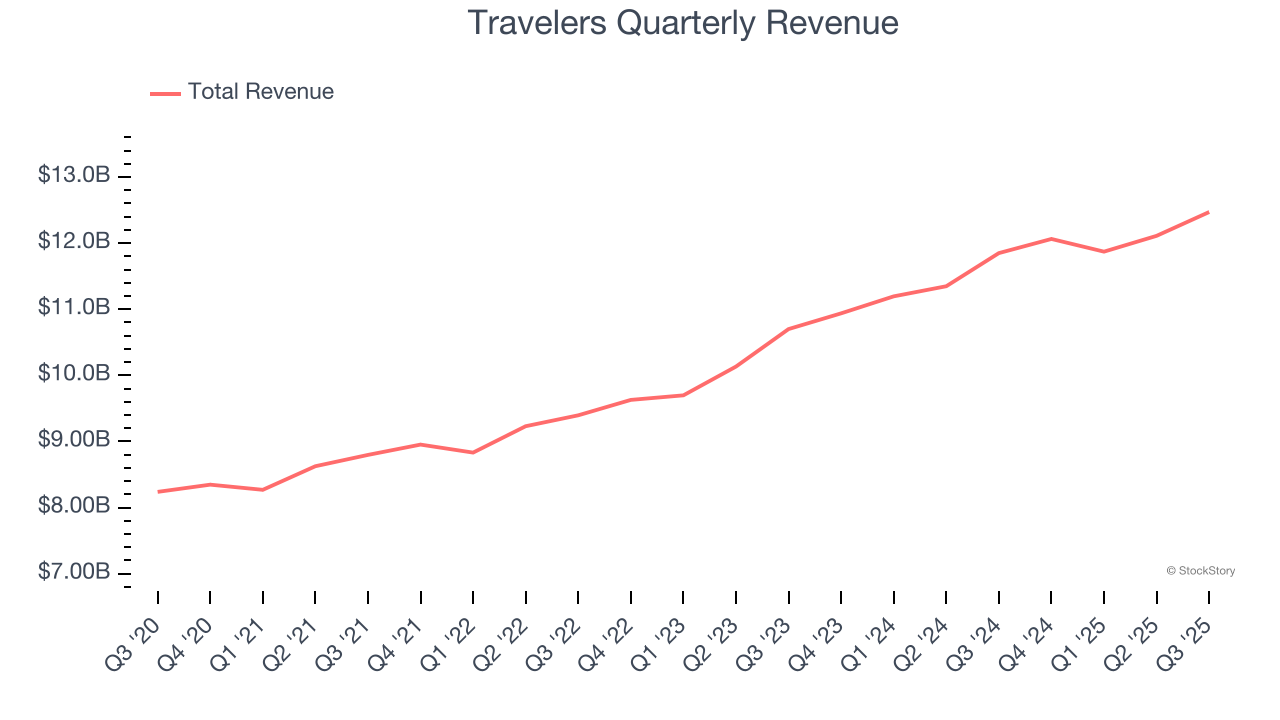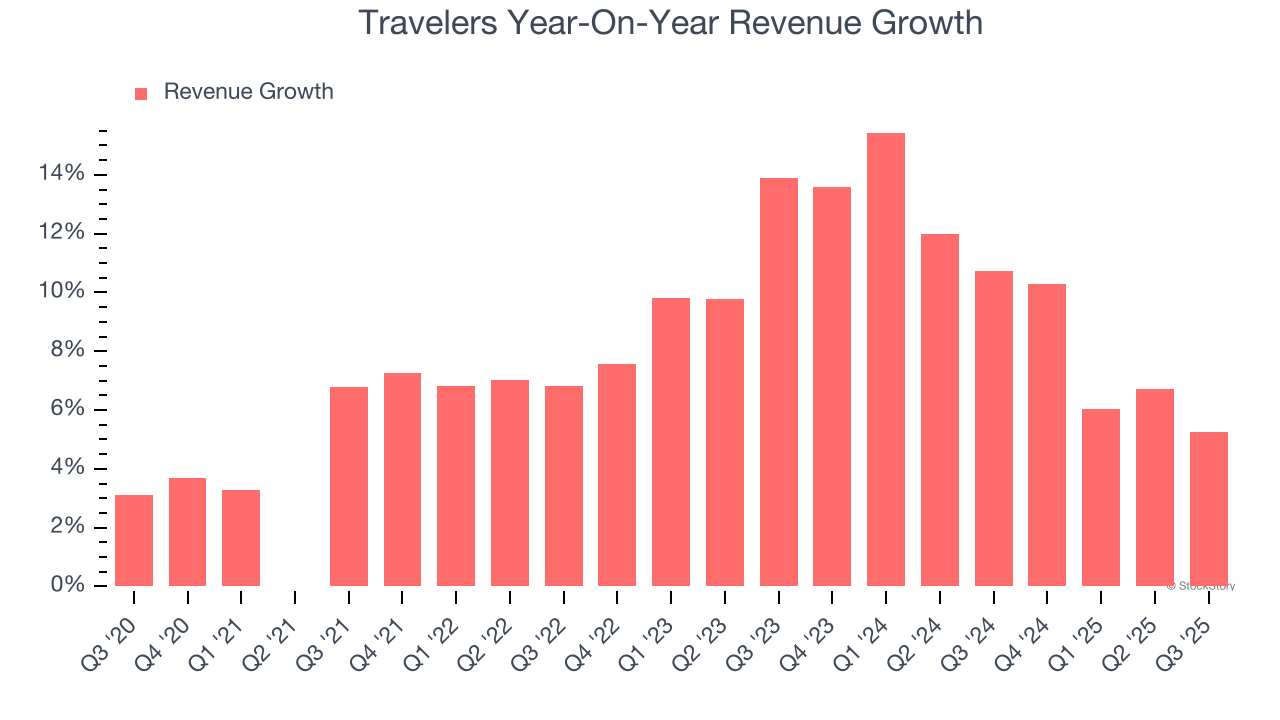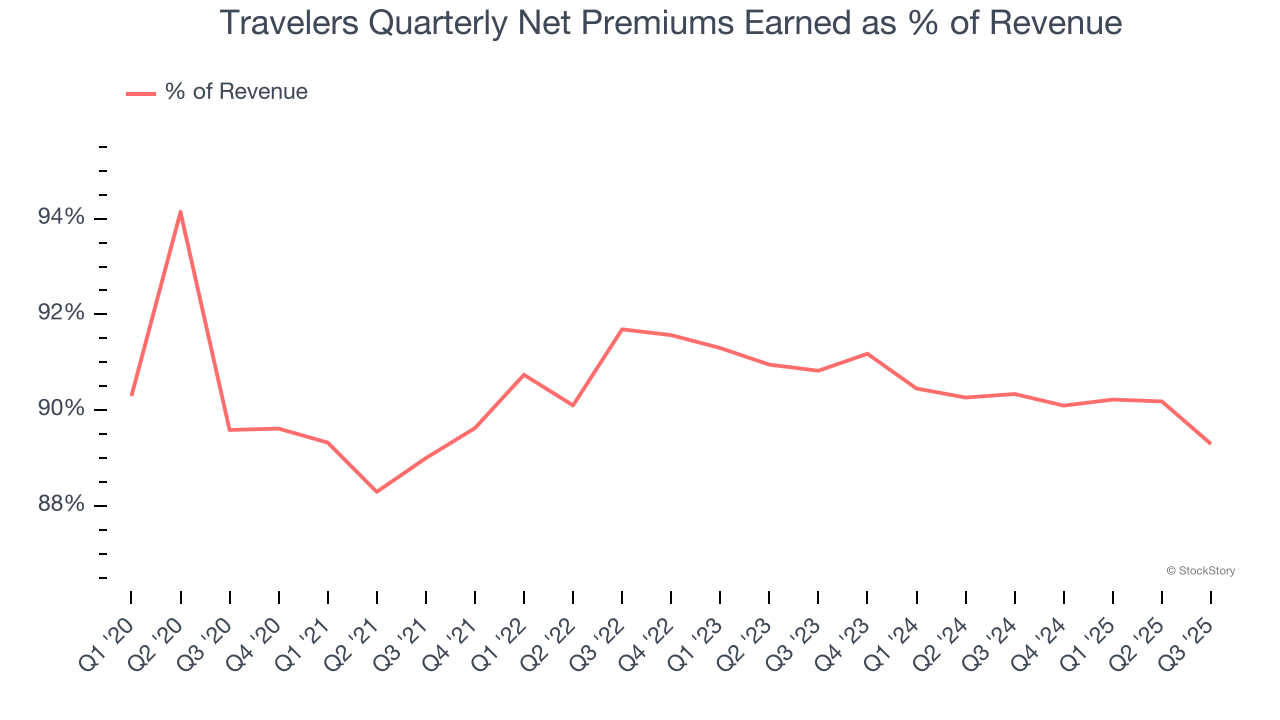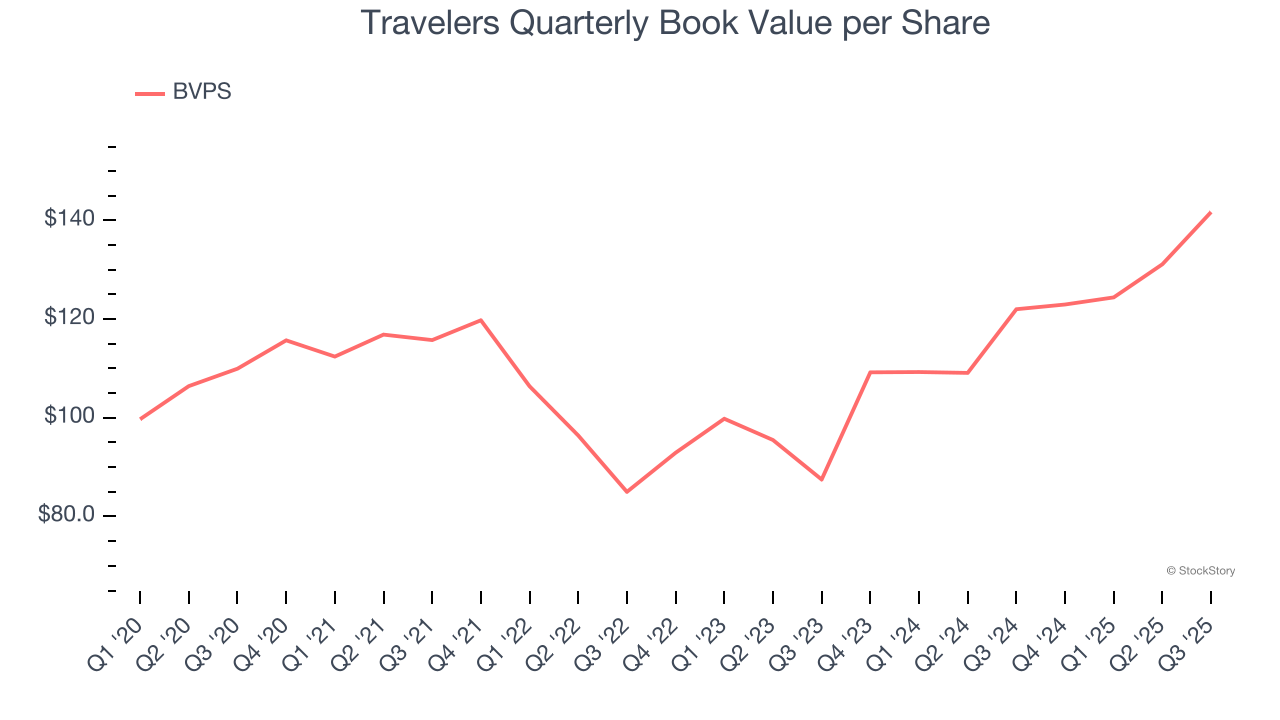
Property and casualty insurer Travelers (NYSE: TRV) announced better-than-expected revenue in Q3 CY2025, with sales up 5.2% year on year to $12.47 billion. Its non-GAAP profit of $8.14 per share was 29.2% above analysts’ consensus estimates.
Is now the time to buy Travelers? Find out by accessing our full research report, it’s free for active Edge members.
Travelers (TRV) Q3 CY2025 Highlights:
- Net Premiums Earned: $11.14 billion vs analyst estimates of $11.15 billion (4% year-on-year growth, in line)
- Revenue: $12.47 billion vs analyst estimates of $12.34 billion (5.2% year-on-year growth, 1.1% beat)
- Combined Ratio: 87.3% vs analyst estimates of 91.6% (425.6 basis point beat)
- Adjusted EPS: $8.14 vs analyst estimates of $6.30 (29.2% beat)
- Book Value per Share: $141.72 vs analyst estimates of $151.73 (16.2% year-on-year growth, 6.6% miss)
- Market Capitalization: $60.66 billion
Company Overview
Tracing its roots back to 1853 when it insured travelers against accidents on steamboats and railroads, Travelers (NYSE: TRV) provides a wide range of commercial and personal property and casualty insurance products to businesses, government units, associations, and individuals.
Revenue Growth
Insurance companies generate revenue three ways. The first is the core insurance business itself, represented in the income statement as premiums earned. The second source is investment income from investing the “float” (premiums collected but not yet paid out as claims) in assets such as fixed-income assets and equities. The third is fees from policy administration, annuities, and other value-added services. Thankfully, Travelers’s 8.9% annualized revenue growth over the last five years was decent. Its growth was slightly above the average insurance company and shows its offerings resonate with customers.

We at StockStory place the most emphasis on long-term growth, but within financials, a half-decade historical view may miss recent interest rate changes, market returns, and industry trends. Travelers’s annualized revenue growth of 9.9% over the last two years is above its five-year trend, suggesting its demand recently accelerated.  Note: Quarters not shown were determined to be outliers, impacted by outsized investment gains/losses that are not indicative of the recurring fundamentals of the business.
Note: Quarters not shown were determined to be outliers, impacted by outsized investment gains/losses that are not indicative of the recurring fundamentals of the business.
This quarter, Travelers reported year-on-year revenue growth of 5.2%, and its $12.47 billion of revenue exceeded Wall Street’s estimates by 1.1%.
Net premiums earned made up 90.3% of the company’s total revenue during the last five years, meaning Travelers lives and dies by its underwriting activities because non-insurance operations barely move the needle.

Our experience and research show the market cares primarily about an insurer’s net premiums earned growth as investment and fee income are considered more susceptible to market volatility and economic cycles.
Software is eating the world and there is virtually no industry left that has been untouched by it. That drives increasing demand for tools helping software developers do their jobs, whether it be monitoring critical cloud infrastructure, integrating audio and video functionality, or ensuring smooth content streaming. Click here to access a free report on our 3 favorite stocks to play this generational megatrend.
Book Value Per Share (BVPS)
Insurers are balance sheet businesses, collecting premiums upfront and paying out claims over time. Premiums collected but not yet paid out, often referred to as the float, are invested and create an asset base supported by a liability structure. Book value per share (BVPS) captures this dynamic by measuring these assets (investment portfolio, cash, reinsurance recoverables) less liabilities (claim reserves, debt, future policy benefits). BVPS is essentially the residual value for shareholders.
We therefore consider BVPS very important to track for insurers and a metric that sheds light on business quality. While other (and more commonly known) per-share metrics like EPS can sometimes be lumpy due to reserve releases or one-time items and can be managed or skewed while still following accounting rules, BVPS reflects long-term capital growth and is harder to manipulate.
Travelers’s BVPS grew at a tepid 5.2% annual clip over the last five years. However, BVPS growth has accelerated recently, growing by 27.3% annually over the last two years from $87.47 to $141.72 per share.

Over the next 12 months, Consensus estimates call for Travelers’s BVPS to grow by 21% to $151.73, elite growth rate.
Key Takeaways from Travelers’s Q3 Results
It was good to see Travelers beat analysts’ EPS expectations this quarter. On the other hand, its net premiums earned was just in line and book value per share, an important metric of fundamental health for this industry, missed. Overall, this print was mixed. Investors were likely hoping for more, and shares traded down 5% to $256 immediately after reporting.
So do we think Travelers is an attractive buy at the current price? If you’re making that decision, you should consider the bigger picture of valuation, business qualities, as well as the latest earnings. We cover that in our actionable full research report which you can read here, it’s free for active Edge members.





